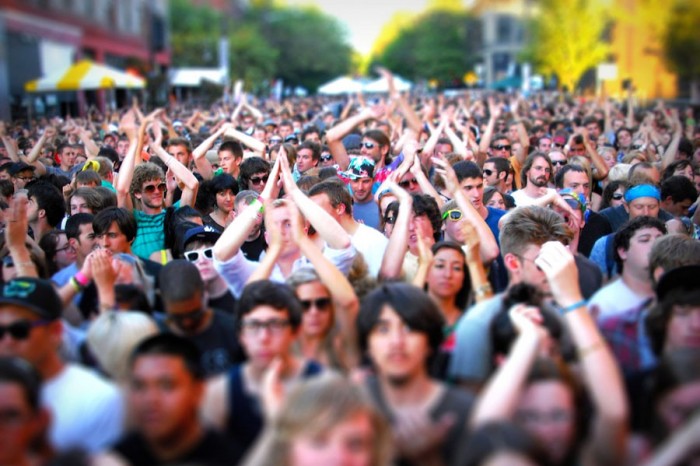
Imagine waking up in the neighborhood where you’ve lived for 20 years and finding everything was changed. The people you walk by aren’t the regulars, the conversations aren’t the same, and the environment you’d grown to love had just been swept away.
You would be devastated right?
There’s no doubt Seattle has changed a lot since I’ve lived here. But what remains pretty much untouched is the ratio of the white-to-minority population.
A 2011 Seattle Times article noted that Seattle was one of the top five whitest cities in America.
Just a few years later we’re talking about how diverse it is.
When I walk into any given room in this town, nine times out of ten I am the only minority. Even if I’m not, there is still a gap — a dominant culture that I cannot identify with.
“I think they are getting [diversity] confused with inclusion…[we] live here, but we don’t have a seat at the table.”
Look closer at the numbers — almost 70 percent white? Barely seven percent black? No matter how you slice it, that doesn’t make this city “diverse.”
My friend Dumi may have said it best: “I think they are getting [diversity] confused with inclusion…[we] live here, but we don’t have a seat at the table.”
Other friends laughed that I could be so agitated about this. But most of those that did aren’t minorities.
Why fight the fire? Because I am sick of people pretending that my life is so black and white. I started my time here with this crazy notion that when I walk in a coffee shop and I want to identify with someone, their background doesn’t have to be the same as mine.
But Seattle has a way of crushing that desire.
When I go into a hair salon, and I get charged differently because I have “ethnic hair.” I look for representations of myself and my standard of beauty in public and they’re nowhere to be found.
How can a city praise itself for being rich in diversity as it pushes it away? Historically minority neighborhoods are being gentrified. We’re tearing down old historic buildings to rebuild for yuppies, (not to say all yuppies are white, but if the shoe is a loafer…). These one-stop condo paradises are raising the rents of people who have been in neighborhoods for decades, and pushing the disadvantaged further out of the city.
This is a real conversation we need to have, but people would rather spend time explaining how they ‘feel’ about how diverse the city is, and not looking at what the facts are.
It’s not diversity if you have to figure out what zip code to live in to make yourself appear less racist. It’s not diversity if you have to push out people of color in order to seem progressive — that’s just selfish.
Seattle is far better place to live than most other cities in this country. But I don’t get the desire to perpetuate the false idea that this place knows or understands diversity.
It’s more than just the “the neighborhood you’re in” — as Stuteville’s column put it — because a large majority of neighborhoods in Seattle are white.
This city has a long way to go as far as I’m concerned.
If we have to qualify statements about how diverse our city is with the caveat that “it depends where you live,” that’s not real diversity, is it?


What an insightful piece, Grace. I’ve lived in many cities–New York, Los Angeles, New Orleans and Seattle– and the latter was the least diverse of them all. Having moved there from New Orleans it was almost shocking to me to see that sea of white. I used to tell my husband, “I feel like an Italian in a Swedish movie.” (I’m not Italian, I’m Jewish–but as an Italian friend of mine used to say, “Same thing. Lots of guilt, lots of gesticulations, lot of noise). Where I live now in Van Nuys in the San Fernando Valley the diversity is genuine–it feels like the real world. Seattle is a fine city–but talking the talk is easy when you don’t have to walk the walk.
Great concluding point Grace! Thanks for probing at something that most, in a city populated largely by privileged white people, are too comfortable to risk discomfort for.
The plural of anecdote is not data. Sorry, the facts are Seattle has a growing minority population. Your anecdotes are not equal point-counterpoint to facts. If there’s not enough minority folk for your taste, understandable. If somebody wants to charge more for your hair, that’s another issue.
It’s funny you should say that. Never said it was an issue for the masses…you’ve only made a comment because it’s the truth and your offended!!!